What is the Best Coconut Substitute?
Do you need a coconut substitute? Are you tired of using coconut in all your culinary creations? Whether it’s in your curries, cakes, or smoothies, we understand that sometimes you need a change. Whether you’re vegan, have a nut allergy, or simply want to try something new, we have come up with some cracking suggestions for you. Say goodbye to the monotony of using coconut and explore a world of delicious possibilities. It’s time to shake up your culinary routine and discover which of our suggestions is the perfect substitute for all your coconut needs.
Try using: Almond Flakes, Cashew Cream, Avocado Oil, Soy or Oat Milk, Tigernut Flour, Sesame Seeds, Pumpkin Seeds, or Greek Yogurt.
What is Coconut, where does it come from, and how do you use it?
Coconut, often referred to as the “tree of life,” is a tropical fruit harvested from the coconut palm tree. Native to regions such as Southeast Asia, the Pacific Islands, and the Caribbean, coconuts have been cherished for centuries for their culinary and nutritional benefits. From coconut milk and cream to shredded coconut and oil, you can use this fruit in both sweet and savory dishes. Its distinct flavor and texture add richness to curries, desserts, baked goods, and even beverages.
Now, you might be wondering, is it actually good for you? Well, despite its high saturated fat content, coconut boasts numerous health benefits. It’s rich in medium-chain triglycerides (MCTs), which are believed to support weight loss and boost brain function. Plus, it’s a good source of fiber, vitamins, and minerals, including potassium and manganese.
What can I substitute for Coconut?
Here are some of the best ingredients to substitute the flavor and role that coconut provides in your recipes.
- Almond Flakes
- Cashew Cream
- Avocado Oil
- Soy or Oat Milk
- Tigernut Flour
- Sesame Seeds
- Pumpkin SeedsGreek Yogurt
Coconut substitutes
Almond Flakes as an alternative to Coconut
Almond flakes, also known as almond slivers or sliced almonds, are thin, flat pieces of almond nut. You make them by slicing almonds thinly into delicate, uniform pieces that resemble small flakes or slivers.
Now, let’s talk about using almond flakes as a substitute for coconut. Almond flakes offer a similar texture to shredded coconut, albeit with a slightly different flavor profile. Here’s how you can use them:
- Baking: Almond flakes are a fantastic addition to baked goods like cookies, muffins, cakes, and granola bars. You can simply add them into the batter or sprinkle them on top of the finished product before baking. This will give an added crunch and visual appeal.
- Granola: Replace shredded coconut with almond flakes in your homemade granola recipe. Toast them along with oats, nuts, seeds, and dried fruit for a delicious and nutritious breakfast or snack option.
- Trail Mixes: Add almond flakes to your favorite trail mix combination for a satisfying crunch and nutty flavor. They also pair well with other nuts, seeds, dried fruit, and even a touch of chocolate. This pairing can make for a rather balanced and energizing snack.
- Salads: Sprinkle almond flakes on top of salads for added texture and flavor. They complement both green salads and fruit salads, adding a delightful crunch and nuttiness to the mix.
- Asian Dishes: In savory dishes like stir-fries or noodle dishes, use almond flakes to provide texture and a hint of nuttiness. Toast them lightly before adding them to your dish for extra flavor.
Overall, almond flakes are a great ingredient that you can use in sweet and savory recipes to replace shredded coconut.
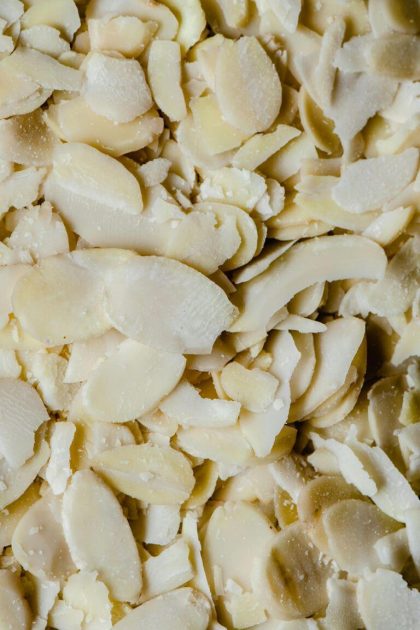
Cashew Cream as an alternative to Coconut
Cashew cream is a dairy-free alternative to traditional cream made from cashew nuts. It’s created by blending soaked cashews with water until smooth. This results in a creamy base that can be used in various culinary applications.
Here’s how to make cashew cream:
- Soak the Cashews: Start by soaking raw cashews in water for a few hours or overnight. This helps soften the nuts, making them easier to blend and resulting in a smoother cream.
- Drain and Rinse: After soaking, drain and rinse the cashews thoroughly to remove any excess debris or residue.
- Blend: Transfer the soaked cashews to a blender and add fresh water at a 1:1 ratio. If you want a slightly thicker cream, use less water. Blend on high speed until smooth and creamy, scraping down the sides of the blender as needed.
- Strain (Optional): For an even smoother texture, you can strain the cashew cream through a fine mesh sieve or cheesecloth to remove any remaining pulp or grit.
- Store: Transfer the cashew cream to an airtight container and store it in the refrigerator for up to one week.
Now, let’s discuss how to use cashew cream as a substitute for coconut in recipes:
- Curries and Soups: You can use cashew cream as a substitute for coconut milk or cream in curry dishes and soups. Simply add it towards the end of cooking to add a touch of creaminess and richness to the dish. Adjust the amount according to your desired consistency and taste.
- Desserts: Use cashew cream as a base for dairy-free desserts like puddings, mousses, and ice creams. It adds a creamy texture and subtle nutty flavor that pairs well with sweet ingredients like chocolate, vanilla, and fruit.
- Sauces and Dressings: You can thin out cashew cream with water or citrus juice to create creamy sauces and dressings for salads, pasta dishes, and vegetable dips. Experiment with different herbs, spices, and seasonings to customize the flavor to your liking.
- Baked Goods: Incorporate cashew cream into baked goods like cakes, muffins, and creamy fillings for pastries. It adds moisture and richness without the coconut flavor. This makes it a great option for those with dietary restrictions or preferences.
By using cashew cream as a substitute for coconut, you can enjoy creamy and tasty dishes while accommodating various dietary needs and preferences.
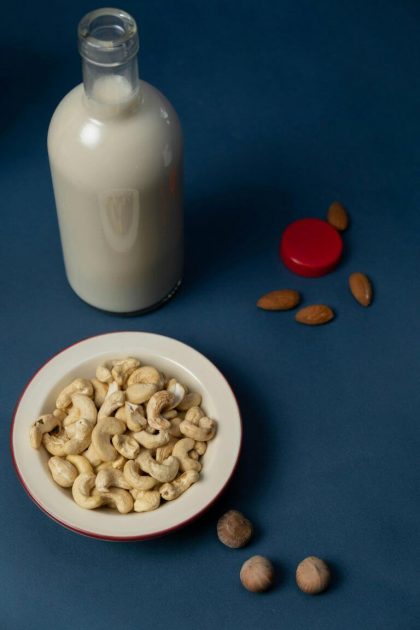
Avocado Oil as an alternative to Coconut
Avocado oil is a type of cooking oil pressed from the pulp of ripe avocados. It’s known for its mild flavor, high smoke point, and numerous health benefits. This makes it a popular choice for cooking, baking, and salad dressings.
Avocado oil is extracted from the flesh of ripe avocados, known for their creamy texture and rich taste. Unlike coconut oil, which solidifies at cooler temperatures, avocado oil remains liquid, even when refrigerated. This makes it convenient to use, from sautéing and frying to drizzling over salads or grilled vegetables.
Using Avocado Oil as a Substitute for Coconut:
- Cooking: You can use avocado oil as a substitute for coconut oil in cooking due to its neutral flavor and high smoke point. It’s ideal for sautéing, stir-frying, and baking. It can withstand high temperatures without burning or imparting a strong taste to the dish. Simply use avocado oil in place of coconut oil in your favorite recipes, adjusting the quantity as needed.
- Baking: In baking recipes that call for coconut oil, you can use avocado oil as a one-to-one substitute. It adds moisture and richness to baked goods without altering the flavor significantly. Whether you’re making cookies, cakes, or muffins, avocado oil can add a light texture and subtle nutty taste to your bakes.
- Salad Dressings: Avocado oil makes a delicious and nutritious base for homemade salad dressings. Its smooth texture and mild flavor complement a variety of ingredients, from citrus juices and herbs to mustard and honey. Simply whisk avocado oil with your preferred seasonings and emulsifiers for a dressing that’s you can use sprinkle over greens or grain salads.
- Marinades and Sauces: Use avocado oil as a substitute for coconut oil in marinades and sauces for meat, poultry, seafood, or tofu. Its neutral taste allows other flavors to shine. And its high smoke point ensures that your dishes cook evenly and develop a golden crust when grilled or roasted.
Overall, avocado oil is a versatile and healthy alternative to coconut oil, offering similar benefits without the distinct coconut flavor. Whether you’re cooking, baking, or dressing salads, avocado oil can elevate your dishes with its smooth texture and subtle nutty taste.
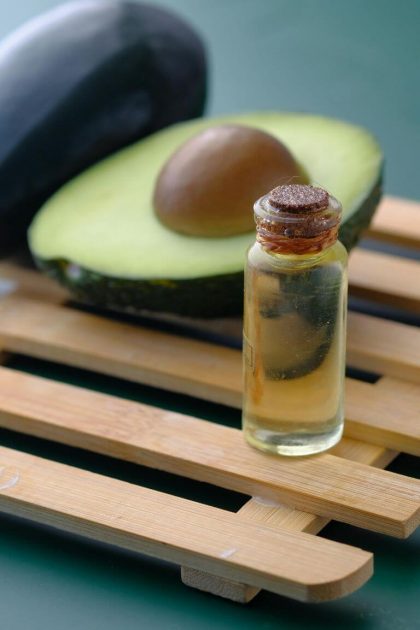
Soy or Oat Milk as an alternative to Coconut
Soy milk and oat milk are plant-based milk alternatives to coconut. They both offer a dairy-free option for those with lactose intolerance or dietary preferences.
Soy Milk:
Soy milk is made from soybeans and water, often fortified with vitamins and minerals to mimic the nutritional profile of cow’s milk. It has a creamy texture and a slightly sweet, nutty flavor. Soy milk is a good source of protein, calcium, and vitamin D. This makes it a popular choice among vegans and those looking for a dairy-free alternative.
Using Soy Milk as a Substitute for Coconut:
- Cooking and Baking: You can use soy milk as a substitute for coconut milk in cooking and baking recipes. It works well in savory dishes like curries, soups, and sauces, providing creaminess and richness without the coconut flavor. In baking, soy milk can replace coconut milk in cakes, muffins, and creamy fillings. It adds moisture and texture to the finished product.
- Beverages: Enjoy soy milk as a standalone beverage or add it to smoothies, coffee, tea, and other drinks. Its creamy consistency and neutral flavor make it a great option for adding richness to beverages without the coconut taste.
- Desserts: Use soy milk to make dairy-free desserts like puddings, custards, and ice creams.
Oat Milk:
Oat milk is made from whole oats blended with water and strained to remove solids. It has a naturally sweet flavor and a creamy consistency, similar to cow’s milk. Oat milk is often fortified with vitamins and minerals, including calcium and vitamin D, to enhance its nutritional value.
Using Oat Milk as a Substitute for Coconut:
- Coffee and Tea: Oat milk is a popular choice for adding creaminess to coffee and tea. Its mild flavor allows the taste of the hot beverages to come through. It does not overpower them. This makes it an excellent alternative to coconut milk for those who prefer a neutral taste.
- Cereal and Smoothies: Pour oat milk over cereal or blend it into smoothies for a nutritious and satisfying breakfast or snack. Its creamy texture and subtle sweetness enhance the flavor of cereals, granolas, and fruit-based smoothies without the coconut undertone.
- Baking: you can use oat milk in baking recipes as a substitute for coconut milk. It adds moisture and richness to cakes, cookies, and bread without altering the flavor significantly. Whether you’re making pancakes, waffles, or muffins, oat milk can help achieve a tender crumb and golden-brown crust.
In summary, soy milk and oat milk are great alternatives to coconut milk. They both offer a creamy texture and neutral flavor that you can use in a variety of dishes. Whether you’re cooking, baking, or enjoying beverages, these plant-based milk alternatives provide delicious options for those seeking dairy-free alternatives.

Tigernut Flour as an alternative to Coconut
The name ‘Tigernut’ is a bt of a misnomer as despite their name, they are not actually nuts! They are small tubers, sometimes known as earth almonds. The fact that they aren’t a nut means they are suitable for anyone who has a nut allergy.
Tigernuts are believed to have originated in ancient Egypt, where they were a staple food. They were also used for their medicinal properties. Egyptians consumed tigernuts for their high fiber content, which aided in digestion and overall health. Over time, tigernuts spread to the Mediterranean region and West Africa, where they continue to be cultivated and enjoyed today.
Tigernuts have played a significant part in the human diet for many year. In fact this is evidenced by the discovery of tigernut remnants in archaeological sites. They provided a valuable source of nutrition and energy for early humans.
Today, tigernuts are experiencing a resurgence in popularity due to their numerous health benefits. They are gluten-free, high in fiber, and rich in vitamins and minerals. Tigernuts are being recognized as a nutritious and versatile ingredient in various culinary applications, from baking to snacking.
Tigernut tubers are ground down to make the flour, which has a slightly sweet and nutty flavor. It is enjoyed in both gluten-free and paleo baking.
Here’s how you can use tigernut flour as a substitute for coconut:
- Baking: You can use tigernut flour as a one-to-one substitute for coconut flour in many recipes. It adds moisture, texture, and a subtle sweetness to baked goods like cookies, muffins, cakes, and bread. Keep in mind that tigernut flour is denser than coconut flour, so you may need to adjust the amount of liquid or other ingredients in the recipe accordingly.
- Coatings and Crusts: Use tigernut flour as a coating for meats, fish, or vegetables before frying or baking. Its fine texture helps create a crispy crust while adding a hint of sweetness and nuttiness to the dish. You can also mix tigernut flour with herbs, spices, and breadcrumbs for extra flavor and crunch.
- Thickening Agent: You can use tigernut flour as a thickening agent in soups, sauces, and gravies. Simply whisk it into the liquid gradually until the desired consistency is achieved. Its natural sweetness can enhance the flavor of savory dishes without overpowering them. This also makes it a great option for thickening and flavoring sauces.
- Smoothies and Shakes: Add a spoonful of tigernut flour to smoothies and shakes for added fiber, nutrients, and creaminess. Its mild flavor pairs well with fruits, vegetables, and other ingredients commonly found in smoothie recipes. It also provides a nutritious boost without altering the taste significantly.
- Desserts: You can use tigernut flour to make a variety of desserts, including puddings, custards, and pie crusts. Its sweet and nutty flavor complements the richness of dairy-free ingredients like coconut milk or almond milk. This allows you to create decadent treats that can be enjoyed by everyone, including those with gluten or nut allergies.
Overall, tigernut flour is a great ingredient that you can use in a variety of sweet and savory recipes as a substitute for coconut flour.
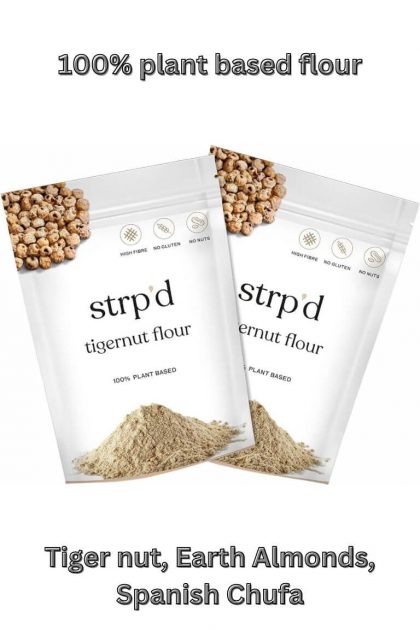
Sesame Seeds as an alternative to Coconut
Sesame seeds are tiny, oval-shaped seeds harvested from the sesame plant, scientifically known as Sesamum indicum. They come in various colors, including white, black, and brown, and are widely used in cooking around the world. Sesame seeds have a nutty flavor and a delicate, crunchy texture, making them a versatile ingredient in both sweet and savory dishes.
Here’s how you can use sesame seeds as a substitute for coconut:
- Baking: You can use toasted sesame seeds as a substitute for shredded coconut in baking recipes. They add a delightful crunch and nutty flavor to cookies, cakes, muffins, and granola bars. Simply sprinkle toasted sesame seeds on top of the batter before baking or mix them into the dough for added texture and flavor.
- Trail Mixes and Snacks: Sesame seeds are a nutritious addition to trail mixes, snack bars, and energy bites. Combine them with nuts, dried fruit, and other seeds for a satisfying and portable snack that’s perfect for on-the-go.
- Salads and Side Dishes: Sprinkle toasted sesame seeds over salads, roasted vegetables, rice dishes, and stir-fries for added flavor and texture. They complement a wide range of ingredients, adding a nutty crunch and visual appeal to your culinary creations.
- Sauces and Dressings: Sesame seeds are a key ingredient in many Asian-inspired sauces and dressings, such as tahini, sesame vinaigrette, and sesame ginger sauce. Use sesame seeds as a substitute for shredded coconut in these recipes to achieve a similar richness and depth of flavor.
- Coating and Crusting: You can use crushed sesame seeds as a coating or crust for meats, fish, tofu, and vegetables before frying or baking. They create a flavorful and crispy outer layer that pairs well with a variety of main ingredients.
- Dips and Spreads: Blend toasted sesame seeds with oil, garlic, and other seasonings to make homemade dips and spreads, such as sesame seed paste (tahini) or sesame seed butter. Use these blends as a substitute for coconut-based spreads and sauces in sandwiches, wraps, and dips.
Overall, sesame seeds are a great ingredient that you can use in a variety of ways as a substitute for coconut. Whether you’re baking, cooking, or snacking, sesame seeds add delicious flavor, texture, and nutrition to your favorite dishes.

Pumpkin Seeds as an alternative to Coconut
Pumpkin seeds, also known as pepitas, are the edible seeds found within the pumpkin fruit. They are flat, oval-shaped seeds with a white outer hull and a green inner kernel. Pumpkin seeds are packed with nutrients, that include protein, fiber, healthy fats, vitamins, and minerals. This makes them a nutritious addition to your diet.
Here’s how you can use pumpkin seeds as a substitute for coconut:
- Baking: You can use toasted pumpkin seeds as a substitute for shredded coconut in baking recipes. They add a nutty flavor and crunchy texture to cookies, muffins, bread, granola bars, and other baked goods. Simply sprinkle toasted pumpkin seeds on top of the batter before baking or mix them into the dough for added texture and flavor.
- Trail Mixes and Snacks: Pumpkin seeds are a delicious and nutritious addition to homemade trail mixes, snack bars, and energy bites. Combine them with nuts, dried fruit, chocolate chips, and other seeds for a satisfying and portable snack that’s perfect for on-the-go.
- Salads and Side Dishes: Sprinkle toasted pumpkin seeds over salads, roasted vegetables, rice dishes, quinoa bowls, and pasta salads for added flavor, crunch, and visual appeal. They complement a wide range of ingredients and cuisines, adding a nutty texture and earthy flavor to your culinary creations.
- Soups and Stews: Use toasted pumpkin seeds as a garnish for soups, stews, chilis, and curries. They add a crunchy contrast to the creamy texture of the soup and enhance the overall flavor profile of the dish.
- Coating and Crusting: you can use crushed pumpkin seeds as a coating or crust for meats, fish, tofu, and vegetables before frying or baking. They create a flavorful and crispy outer layer that pairs well with a variety of main ingredients.
- Dips and Spreads: Blend toasted pumpkin seeds with oil, garlic, herbs, and other seasonings to make homemade dips and spreads. Pumpkin seed pesto, for example, is a delicious and nutritious alternative to traditional basil pesto which you can use as a spread, sauce, or dip for crackers, bread, vegetables, and pasta dishes.
Overall, pumpkin seeds are a versatile ingredient that you can use in a variety of ways as a substitute for coconut. Whether you’re baking, cooking, snacking, or garnishing, pumpkin seeds add delicious flavor, texture, and nutrition to your favorite dishes.
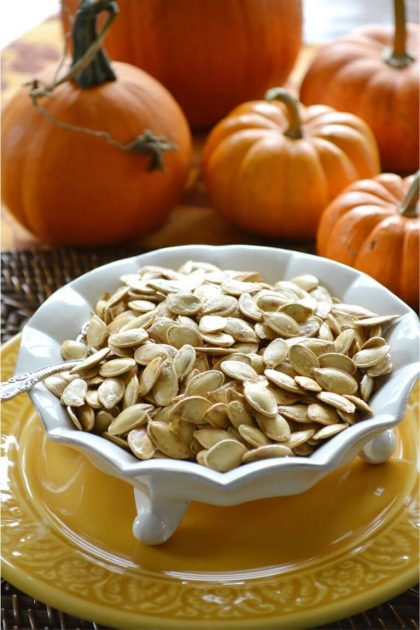
Greek Yogurt as an alternative to Coconut
Greek yogurt is a thick, creamy yogurt that has been strained to remove most of the whey. This results in a higher concentration of protein and a thicker texture compared to regular yogurt. It has a tangy flavor and a velvety consistency, making it a versatile ingredient in both sweet and savory dishes.
Here’s how you can use Greek yogurt as a substitute for coconut:
- Baking: You can use Greek yogurt as a substitute for coconut milk or cream in baking recipes. It adds moisture, richness, and a subtle tang to cakes, muffins, bread, and other baked goods. Replace coconut milk or cream with an equal amount of Greek yogurt in the recipe, adjusting the quantity of other liquids or ingredients as needed to achieve the desired consistency and flavor.
- Desserts: Use Greek yogurt as a base for creamy desserts like parfaits, cheesecakes, mousses, and frozen yogurt. Its thick texture and tangy flavor pair well with sweet ingredients like honey, fruit, chocolate, and nuts, creating decadent treats that are lower in fat and calories compared to coconut-based desserts.
- Sauces and Dressings: you can use Greek yogurt as a substitute for coconut milk or cream in savory sauces and dressings. Its creamy texture and tangy flavor add depth and richness to dishes like curries, soups, pasta sauces, and salad dressings. Simply thin Greek yogurt with water, broth, or citrus juice to achieve the desired consistency, then season with herbs, spices, and other flavorings to taste.
- Marinades and Dips: Use Greek yogurt as a base for marinades and dips for meat, poultry, seafood, or vegetables. Its thick texture helps the marinade adhere to the surface of the food, while its tangy flavor adds complexity to the dish. Combine Greek yogurt with herbs, garlic, lemon juice, and olive oil to make a versatile marinade or mix it with spices and herbs to create a flavorful dip for chips, crackers, or crudité.
- Smoothies and Shakes: You can use Greek yogurt as a creamy base for smoothies and shakes. Its high protein content helps keep you feeling full and satisfied, making it a nutritious addition to your morning routine or post-workout snack. Combine Greek yogurt with fruit, vegetables, milk, or juice, and blend until smooth for a delicious and satisfying beverage.
Overall, Greek yogurt is a versatile ingredient that you can use in a variety of ways as a substitute for coconut. Whether you’re baking, cooking, or blending, Greek yogurt adds creamy texture, tangy flavor, and nutritional benefits to your favorite dishes.

FAQs
What is the closest fruit to coconut?
While no fruit perfectly replicates the taste and texture of coconut, one fruit often considered to have similarities is the jicama. Jicama, also known as Mexican yam bean or Mexican turnip, has a crisp, white flesh with a slightly sweet and nutty flavor, reminiscent of coconut. However, it lacks the rich, creamy texture of coconut flesh or the distinct coconut flavor. Additionally, jicama is lower in fat and calories compared to coconut, making it a healthier alternative in certain recipes. Overall, while jicama can provide a similar crunch and mild sweetness to dishes, it doesn’t fully replace the unique characteristics of coconut.
What can I use in place of coconut milk in curry?
If you’re looking for a substitute for coconut milk in curry, there are several alternatives you can consider depending on your dietary preferences and the flavor profile you want to achieve. Here are some quick suggestions: Heavy Cream, Greek Yogurt, Cashew Cream, Almond Milk, Vegetable Broth, or Tomato-base sauces.
Can I use desiccated coconut instead of shredded coconut?
Yes, you can generally use desiccated coconut as a substitute for shredded coconut in most recipes. Desiccated coconut is simply shredded coconut that has been dried, so it already has a similar texture and flavor to shredded coconut. However, there are a few factors to consider when making the substitution: Desiccated coconut tends to be drier and finer, so you may need to adjust your ingredients to allow for this. Also, desiccated coconut has a more concentrated flavor so once again you may need to adjust how much you use in your recipes.
Overall, desiccated coconut can be a suitable substitute for shredded coconut in many recipes, but it’s essential to consider the texture, moisture content, and flavor impact when making the substitution.
Fun Facts
- Coconuts Can Float for Months: Thanks to their fibrous husks and air-filled interiors, coconuts have impressive buoyancy. In fact, they can drift across oceans and still germinate after months at sea!
- A Versatile Ingredient: Coconuts aren’t just for culinary purposes. The husks, shells, and fibers find use in making ropes, mats, and even charcoal, demonstrating the resourcefulness of this tropical treasure.
- Natural Electrolyte Powerhouse: Need an energy boost after a workout? Forget the sugary sports drinks and opt for coconut water instead. It’s nature’s own electrolyte-rich beverage, perfect for rehydration.
Summary for Coconut substitutes
Okay – that’s you all sorted with suitable substitutes for coconut.
- Almond Flakes: These offer a similar texture to shredded coconut and work well in baking recipes like cookies and granola bars.
- Cashew Cream: When blended, cashews create a creamy texture akin to coconut milk, perfect for curries, soups, and dairy-free desserts.
- Avocado Oil: For recipes calling for coconut oil, avocado oil serves as an excellent substitute due to its mild flavor and high smoke point.
- Soy or Oat Milk: When coconut milk is the recipe’s key ingredient, soy or oat milk can often step in, providing a creamy base with a neutral taste.
- Tigernut Flour: Made from tigernuts, which are actually small root vegetables, tigernut flour offers a slightly sweet flavor and a fine texture. It works well in gluten-free baking recipes, providing a nutty undertone reminiscent of coconut flour.
- Sesame Seeds: Toasted sesame seeds can mimic the crunchiness of shredded coconut and add a nutty flavor to dishes like salads, stir-fries, and baked goods. Plus, they’re packed with nutrients like calcium, iron, and magnesium.
- Pumpkin Seeds: Also known as pepitas, these green seeds offer a similar texture to shredded coconut when toasted. They’re a nutritious addition to granolas, trail mixes, and savory dishes like salads and roasted vegetables.
- Greek Yogurt: In recipes where you use coconut cream for its creamy texture, you can use Greek yogurt as a suitable replacement. It adds richness and tanginess, perfect for sauces, dips, and creamy desserts like mousses and parfaits.
We have gathered together a lot more facts on ingredients such as herbs, spices, oils, nuts, etc. if you would like to learn some more.
Or if you need to swap out another ingredient have a look at our Substitutes section.
Table of Contents
- What is the Best Coconut Substitute?
- What is Coconut, where does it come from, and how do you use it?
- What can I substitute for Coconut?
- Coconut substitutes
- Almond Flakes as an alternative to Coconut
- Cashew Cream as an alternative to Coconut
- Avocado Oil as an alternative to Coconut
- Soy or Oat Milk as an alternative to Coconut
- Tigernut Flour as an alternative to Coconut
- Sesame Seeds as an alternative to Coconut
- Pumpkin Seeds as an alternative to Coconut
- Greek Yogurt as an alternative to Coconut
- FAQs
- Summary for Coconut substitutes
